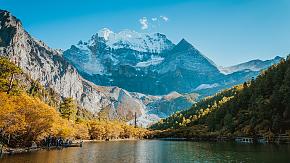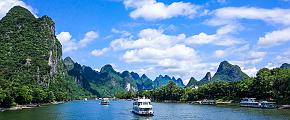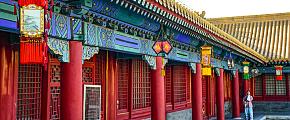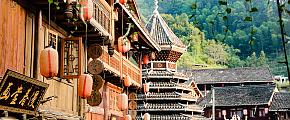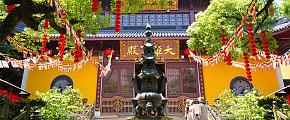Silk Road of China
The Silk Road was a trade highway that began in the Western Han Dynasty (206 BC–9 AD) and connected the eastern and western worlds. It is usually defined as the transportation and trade road that traversed Central Asia and the Pamir Plateau to reach Western Asia.
The Silk Road is composed of many main roads and branch roads. The north road (the Prairie Silk Road) started from the Mongolian Plateau and ended in the Karakoram. Historically, it was an important road used by the nomads of Central Asia to travel west. There originally were several routes, but the longest one was known as the Desert Silk Road. It had been frequently mentioned in ancient documents. The south road, known as the Silk Road on the Sea, was primarily used by Southeast Asians, Persians, and Arabs. This sea road started from China, passed through India and Southeast Asia, and crossed the Red Sea to finally reach the Persian Gulf.
For over ten centuries, Chinese culture, Roman culture and Persian culture had been connected by the ancient Silk Road. Because of the Silk Road, Chinese silk, gunpowder making, paper-making, and printing were introduced to the West, while Buddhism, Nestorianism, Islam, and many arts and technologies were brought into China. The Silk Road has brought the exchange of goods and ideas between China and the West since it was first opened up.
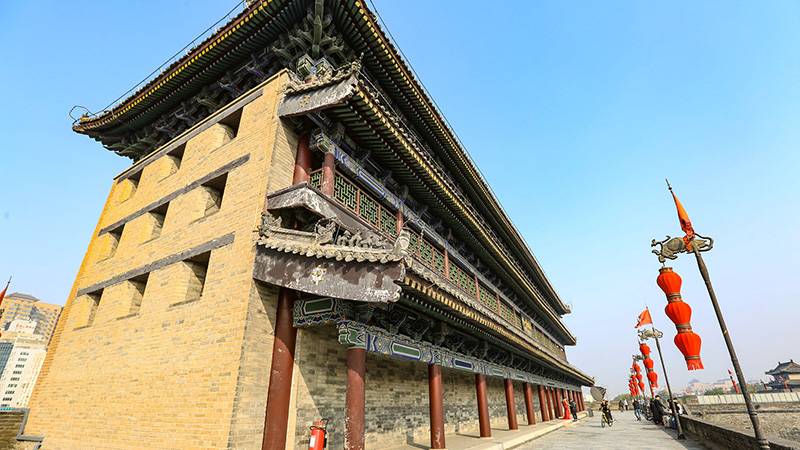 Ancient City Wall, Xi'an
Ancient City Wall, Xi'an
The center road, which extended from Asia to Europe, started in Xi'an in the east and ran over 7,000 kilometers through China's Shaanxi, Gansu, Ningxia, Qinghai, and Xinjiang provinces, over the Pamir Plateau and across parts of the Commonwealth of Independent States in Central Asia, such as Afghanistan, Iran, Iraq, and Syria before it got to the east coast of the Mediterranean. The section in China is more than 4,000 kilometers long, over half of the total length.
Historic sites and cultural relics are rich in the Chinese section. There are the Terracotta Warriors of the Qin Dynasty (221-207 BC), the Famen Temple that still houses bone fragments of The Buddha Sakyamuni, the Mogao and Maijishan Grottoes that were created for over ten dynasties, the Jiayu Pass of the Great Wall, the signal towers of the Han Dynasty, the famous Ta'er Monastery of Tibetan Buddhism, the ruins of Gaochang once a strategic town on the Silk Road, and the ruins of Stone City where you can find clues about Xuan Zang Buddha and Marco Polo. This is a small number of the various sites, relics, and landscapes that exist along China's portion of the Silk Road.
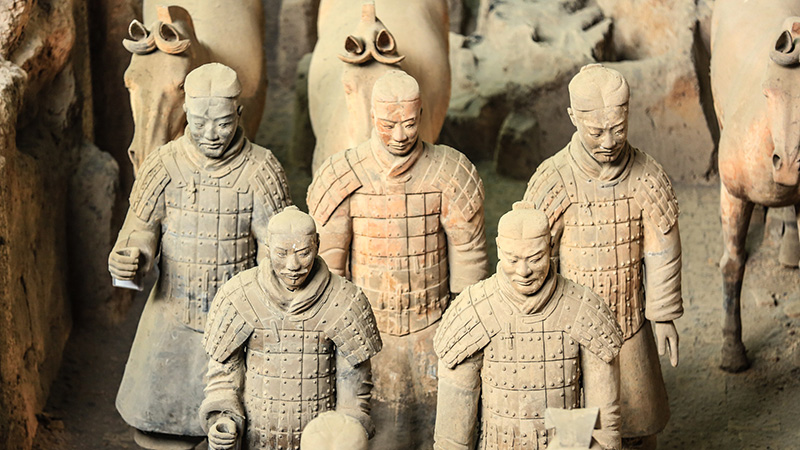 Terra Cotta Warriors, Xi'an
Terra Cotta Warriors, Xi'an
The natural landscape along the Silk Road is nothing short of stunning: the Bird Island of Qinghai, Qinghai's Salt Lake, the Swan Nature Reserve in the Bayanbulak Grassland, the Heavenly Lake in Tianshan Mountain, the wind-corroded terrain of Lopnur, Danxia Landform, Turpan's Flaming Mountain, the Ghost City of Karamay, and many more, too numerous to name. For centuries, these magnificent places have attracted many tourists to explore.
Many ethnic minority groups inhabit the area along the Silk Road. In Shaanxi, Gansu, Ningxia, Qinghai Provinces, and the Xinjiang Uigur Autonomous Region, the ethnic groups each have a different cultural tradition, customs, historical background, and religious beliefs. They are noted for their hospitality and excellence in singing and dancing. Travelers along the Silk Road can visit the Xipo Ethnic Garden, the ethnic kindergartens and villages, and visitors can see herdsmen living as they have for centuries. In different ethnic communities, you can enjoy indigenous singing and dancing, attend unique festive events and holiday celebrations, and shop for indigenous arts and crafts. In some sections of the Silk Road, you can take a cable car to view the scenery or rent camels to travel in the desert to enjoy the landscape and endless sea of sand.
In recent years the Chinese government has been improving the roads and infrastructures along the Silk Road. As one of the most famous tourist projects of China, the ancient Silk Road has attracted the attention of the whole world. Many visitors come on this desert adventure for a scientific survey, historical and cultural exploration, ethnic life experience, ecological tour, sports tour, and to learn about one of the most important culture and trade routes in the world's history.
What Our Clients Say
"Great Customized Service", "Trip of A Lifetime", "Exceed All Expectations"
